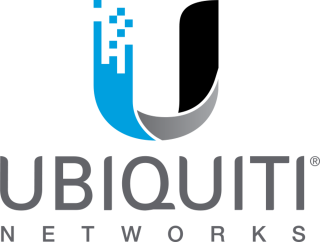In the rapidly evolving tech landscape, the integration of artificial intelligence (AI) into DevOps has marked a revolutionary leap towards automation and efficiency. The synergy between AI in Devops not only accelerates the pace of software development and deployment but also significantly enhances the capability to predict, address, and rectify errors swiftly. This pivotal role of AI in streamlining processes and facilitating ai code generation, ai integration, and efficient ai workflows, underscores its importance in the modern digital ecosystem. By transcending traditional barriers, AI for DevOps is setting new benchmarks for code reviews and operational excellence, making it an indispensable asset for developers and organizations alike.
As you dive deeper into this article, you’ll explore the best AI models and tools that stand at the forefront of revolutionizing DevOps in 2024. From AI-driven platforms like CodeGuru and GitHub Copilot that revolutionize code generation and review processes, to sophisticated monitoring solutions such as Datadog and Sysdig that offer insightful ai integration into operational performance, the landscape is teeming with innovation. Additionally, platforms like PagerDuty leverage AI to enhance incident response workflows, signifying the comprehensive role AI plays across various facets of DevOps. Guiding you through these advancements, this article aims to equip you with the knowledge to harness the full potential of AI in optimizing your DevOps strategies.
CodeGuru
Amazon CodeGuru stands out as a powerful developer tool that leverages machine learning to provide intelligent recommendations, enhancing your code quality and optimizing application performance. By identifying the most resource-intensive lines of code, CodeGuru helps you pinpoint areas where improvements can lead to significant cost savings and efficiency gains.
Functionality
CodeGuru encompasses two main components: CodeGuru Reviewer and CodeGuru Profiler. The Reviewer offers automated code reviews, pinpointing security vulnerabilities and code anomalies before they make it to production. It supports multiple programming languages including Java, Python, and Ruby, making it versatile for various project needs. On the other hand, CodeGuru Profiler gathers detailed performance data from your running applications without needing manual code instrumentation. It analyzes this data to identify the most expensive lines of code and suggests optimizations to enhance performance and reduce costs.
Benefits
The benefits of integrating CodeGuru into your development workflow are extensive:
- Automated Code Reviews: CodeGuru Reviewer simplifies the peer review process by automatically detecting issues and suggesting fixes based on best practices and security guidelines.
- Performance Optimization: By analyzing runtime data, CodeGuru Profiler helps you understand the behavior of your applications, highlighting inefficient code paths and suggesting actionable improvements.
- Cost Reduction: Through detailed analysis, CodeGuru identifies costly code lines that consume excessive CPU resources or perform redundant operations, helping you optimize cloud resource utilization and reduce expenses.
- Enhanced Security: With its ability to detect common vulnerabilities and deviations from security best practices, CodeGuru enhances the overall security posture of your applications.
- Developer Productivity: By automating reviews and performance analysis, CodeGuru frees up developer time, allowing them to focus on more critical aspects of development and innovation.
Drawbacks
While CodeGuru offers numerous advantages, there are a few limitations to consider:
- Language Support: Currently, CodeGuru’s fullest capabilities are available primarily for Java and Python, which might not cover all development environments.
- Learning Curve: The initial setup and integration of CodeGuru into existing CI/CD pipelines can require a learning period, especially for teams not familiar with AWS services.
- Cost Implications: While it can ultimately save money by optimizing code, the upfront costs and pricing model of CodeGuru may be a consideration for smaller teams or projects with limited budgets.
By utilizing Amazon CodeGuru, you can significantly enhance the quality, security, and performance of your applications while also optimizing development processes and reducing operational costs.
GitHub Copilot
Functionality
GitHub Copilot, developed through a collaboration between GitHub, OpenAI, and Microsoft, is an AI-powered coding assistant that transforms how you write code. It integrates seamlessly with popular IDEs like Visual Studio Code, JetBrains, and Neovim, offering features from code completions to chat assistance. Copilot is designed to understand the context of your code, providing suggestions that are not only syntactically accurate but also contextually appropriate, enhancing both the speed and quality of coding.
Benefits
The primary benefits of using GitHub Copilot in your development workflow include:
- Increased Productivity: By automating code suggestions and completions, Copilot allows you to focus on more complex problem-solving, potentially increasing your coding speed by up to 55%.
- Enhanced Learning: As a versatile tool, Copilot supports a wide range of programming languages and offers insights into best coding practices, helping you improve your coding skills.
- Quality Assurance: With its ability to generate code based on the context, Copilot reduces common coding errors and improves the overall robustness of your applications.
- Collaborative Coding: Designed to adhere to coding standards, Copilot is invaluable in team settings where consistency is crucial.
- Accessibility: Efforts are ongoing to make GitHub Copilot accessible to all developers, including those with disabilities, ensuring a wide range of developers can benefit from AI-assisted coding.
Drawbacks
However, there are several considerations to keep in mind while using GitHub Copilot:
- Learning Curve: New users may require time to effectively integrate Copilot’s suggestions into their coding process.
- Over-reliance Risk: There’s a potential risk of becoming too dependent on automated suggestions, which might impact the development of organic coding skills.
- Privacy and Security Concerns: Since Copilot learns from vast amounts of public code, there are concerns about the privacy of the data and the security of the code generated.
- Intellectual Property Issues: The use of public code to train Copilot has raised questions about the originality and ownership of the code it generates.
- Variable Code Quality: While Copilot often suggests syntactically correct code, the relevance and optimization of the suggestions can vary, requiring careful review by the developer.
GitHub Copilot represents a significant advancement in AI-assisted programming, offering substantial benefits to enhance productivity and code quality. However, it’s essential to approach its use with an understanding of its limitations and potential risks to fully leverage its capabilities in software development.
Datadog
Functionality
Datadog provides a comprehensive observability platform that integrates and automates infrastructure monitoring, application performance monitoring (APM), and log management. This unified platform allows you to observe your entire technology stack, including applications, infrastructure, and third-party services. With features like real-time application mapping, infinite cardinality for searching and filtering stack traces, and correlating DevOps metrics across various tags, Datadog enhances your ability to monitor and analyze your digital systems effectively.
Benefits
Using Datadog in your DevOps practices offers numerous advantages:
- Unified Observability: Seamlessly navigate between metrics, traces, and logs for full visibility into your stack, regardless of scale or complexity.
- Accelerated Problem Resolution: Deep visibility into application performance and code efficiency helps reduce time to problem resolution, improving overall operational efficiency.
- Enhanced Security and Compliance: Integrates security monitoring to help detect and address security threats, ensuring compliance with standards like CIS Benchmarks.
- Scalability and Flexibility: Supports a wide array of integrations, making it suitable for any service you might use, enhancing its adaptability to growing and changing environments.
- Customer Support: Users frequently praise Datadog’s customer support for being responsive and helpful, aiding in quicker issue resolution and smoother platform usage.
Drawbacks
However, there are some limitations to consider when implementing Datadog:
- Complexity in Log Management: While Datadog excels in monitoring and detection, its log management can be complex and costly, particularly when it comes to data ingestion and retention.
- Cost Concerns: The pricing model for log retention and analysis can escalate as needs grow, which might be a significant consideration for startups and expanding businesses.
- Learning Curve: New users might find the platform’s extensive features overwhelming, requiring time and effort to fully leverage its capabilities.
Datadog’s robust platform capabilities make it a powerful tool in the arsenal of any DevOps team, poised to enhance operational efficiency and security posture. However, understanding its complexities and cost implications is crucial to maximize its benefits and ensure it aligns with your organizational needs.
Sysdig
Functionality
Sysdig is renowned for its comprehensive capabilities in secure DevOps, particularly for environments utilizing Kubernetes and containers. It integrates seamlessly with your DevOps lifecycle, from development to production, by embedding essential security, compliance, and performance features. This includes image scanning, runtime security, and extensive monitoring, enabling you to confidently manage cloud-native workloads at scale. Sysdig’s collaboration with IBM Edge Ecosystem enhances its functionality by bringing secure DevOps to enterprises using Kubernetes at the edge. Its lightweight instrumentation provides detailed telemetry and incident records, crucial for operations in distributed services like edge computing.
Benefits
The integration of Sysdig into your DevOps practices offers numerous advantages. Here are some highlighted benefits:
- Enhanced Security and Compliance: Sysdig provides robust security monitoring and compliance features that help you detect and mitigate threats efficiently. Its capabilities in cloud posture management offer insights that prioritize your next security tasks.
- Operational Efficiency: With features like automated policy management and detailed incident records, Sysdig helps streamline operations and reduce the time needed to address security incidents.
- Scalability and Visibility: Whether in a data center or at the edge, Sysdig’s tools offer the scalability needed to manage expansive and complex environments. You gain a clear view of your operations, which is essential for effective troubleshooting and risk management.
- Innovative Features: Continuous updates and new features from Sysdig ensure that your DevOps practices remain at the cutting edge, enhancing both security and operational capabilities.
Drawbacks
Despite its numerous strengths, there are some considerations to keep in mind when implementing Sysdig:
- Complexity and Learning Curve: The comprehensive nature of Sysdig’s features can be overwhelming for new users, requiring a significant investment in time and training to fully leverage its capabilities.
- Cost Implications: For some organizations, particularly smaller ones or those with fluctuating needs, the cost of implementing and maintaining Sysdig can be a concern due to its extensive feature set and the need for ongoing updates and management.
- Integration Challenges: While Sysdig offers extensive integration options, aligning it perfectly with existing systems and workflows can sometimes present challenges, requiring additional customization or adjustment.
Sysdig stands out as a powerful tool in the DevOps arsenal, particularly for organizations leveraging Kubernetes and seeking to enhance their security and operational efficiency.
PagerDuty
Functionality
PagerDuty stands as a pivotal component in the realm of DevOps, enhancing operational response with its advanced AI-driven capabilities. The platform’s Process Automation streamlines incident management by automating routine tasks through runbook automation (RBA), which allows for quick diagnosis and resolution of incidents. This integration happens seamlessly with your existing tools, scripts, and APIs, expanding the ability to manage incidents across a broader team spectrum efficiently.
Benefits
The adoption of PagerDuty in your DevOps practices brings a multitude of advantages:
- Reduced Incident Resolution Times: By automating responses and leveraging AI to prioritize critical incidents, PagerDuty significantly cuts down the time needed to address disruptions.
- Enhanced Team Efficiency: With features like on-call management and automated escalations, teams can focus more on strategic tasks rather than routine incident checks.
- Improved Operational Visibility: PagerDuty provides comprehensive insights into incident management processes, offering clarity on operational status and enabling faster decision-making.
- Scalability and Flexibility: The platform’s ability to integrate with over 700 native applications and customizable workflows means it can scale with your business and adapt to various operational needs.
- Noise Reduction and Triage: By reducing alert noise by up to 87%, the platform ensures that teams can focus on the most critical issues, enhancing the efficiency of triage processes.
Drawbacks
While PagerDuty offers substantial benefits, there are several considerations to keep in mind:
- Complexity in Setup and Use: Some users find the wealth of features and integrations can be overwhelming initially, requiring a period of adjustment and training.
- Cost Implications: Depending on the scale of use, the costs associated with comprehensive incident management solutions like PagerDuty can be significant, particularly for smaller organizations.
- Dependency on Digital Infrastructure: As a highly integrated platform, its effectiveness is closely tied to the digital tools and systems it connects with, which might pose challenges in less digitally mature environments.
By integrating PagerDuty into your DevOps toolkit, you can enhance your team’s ability to respond to incidents rapidly and maintain high operational standards, despite the challenges that may arise from its complexity and cost.
Conclusion
Throughout this exploration of AI models and DevOps tools slated to redefine the landscape in 2024, we’ve navigated the functionalities, benefits, and limitations of pioneering technologies like Amazon CodeGuru, GitHub Copilot, Datadog, Sysdig, and PagerDuty. Each tool, with its unique capabilities and potential drawbacks, signifies a significant advance in the integration of AI into DevOps, showcasing a future where software development, monitoring, security, and operations are increasingly efficient and streamlined. This synthesized overview not just reflects the current state but also sets the stage for future advancements, highlighting the critical role AI plays in enhancing DevOps practices.
As the digital ecosystem continues to evolve, the importance of these tools and technologies in optimizing development processes cannot be overstated. While the potential for increased productivity, improved code quality, and enhanced operational efficiency is vast, awareness of their complexities and costs remains crucial. Therefore, developers and organizations alike are encouraged to weigh the benefits against the challenges, ensuring they are not just adopting the latest technologies but are doing so in a way that strategically aligns with their operational goals and objectives. The path forward involves not just the adoption of advanced AI tools but also a commitment to continuous learning and adaptation in the face of rapid technological change.
FAQs
1. What are the top AI tools recommended for DevOps in 2024?
Several AI tools are highly recommended for DevOps, including ClickUp, CodeGuru, Datadog, Sysdig, Snyk, PagerDuty, Harness, and Atlassian Intelligence. These tools offer various functionalities to enhance DevOps practices.
2. What is the emerging trend in DevOps?
GitOps is becoming a significant trend in DevOps. It utilizes Git as a central hub for version control, facilitating improved collaboration, automation, and consistency across development and operational teams.
3. Will AI replace DevOps professionals?
AI is not expected to replace DevOps professionals entirely. Instead, it will serve as a valuable tool to augment their capabilities, allowing them to accomplish more efficiently. However, AI tools still require human expertise for oversight and configuration.
4. How is DevOps automation expected to evolve by 2030?
The DevOps automation tools market is projected to grow significantly, reaching an estimated value of US$ 42.98 billion by 2030, up from US$ 8.63 billion in 2023. This growth represents a compound annual growth rate (CAGR) of 25.8%. North America is anticipated to be the largest market, holding over 33% of the market share as of 2023.










